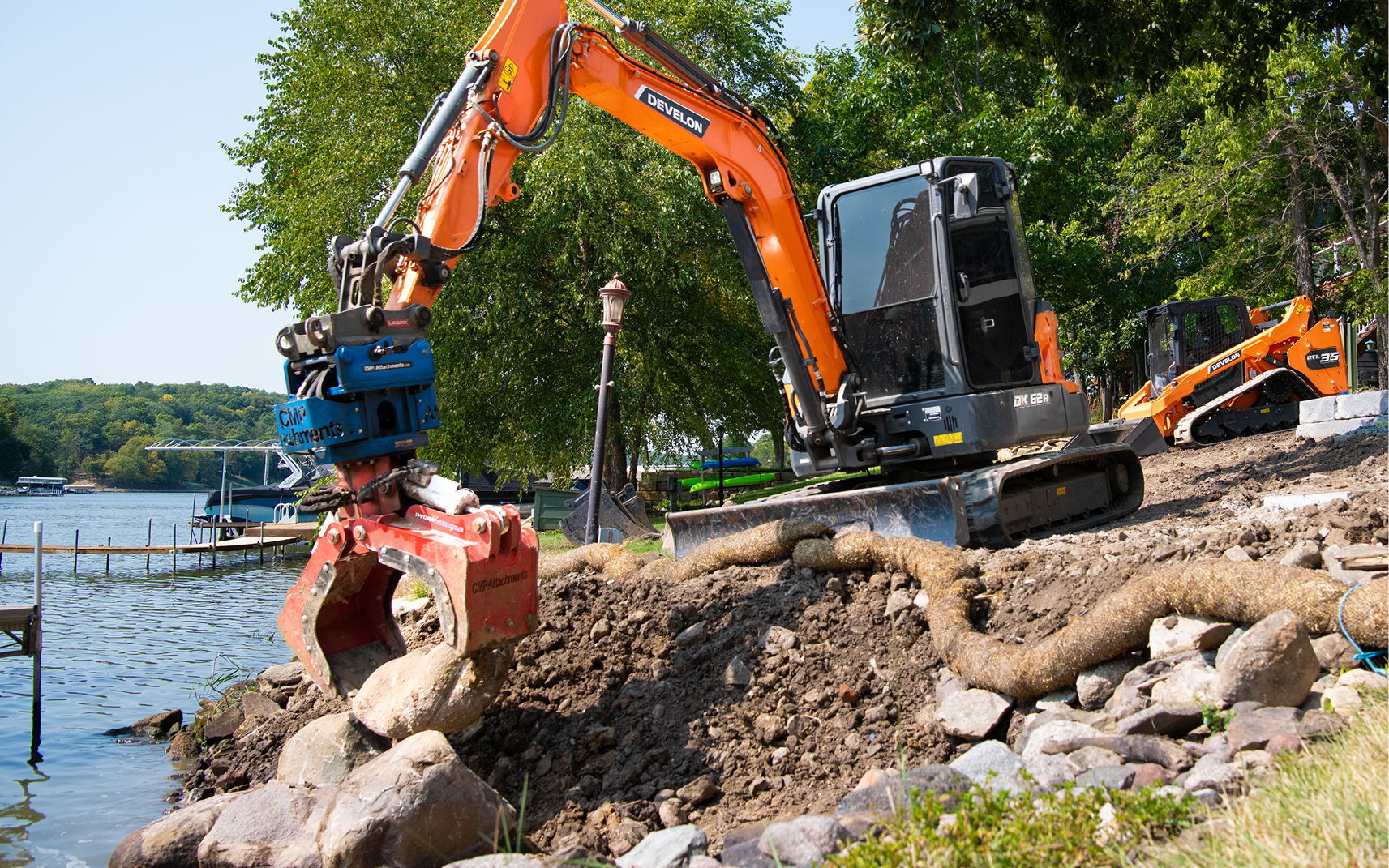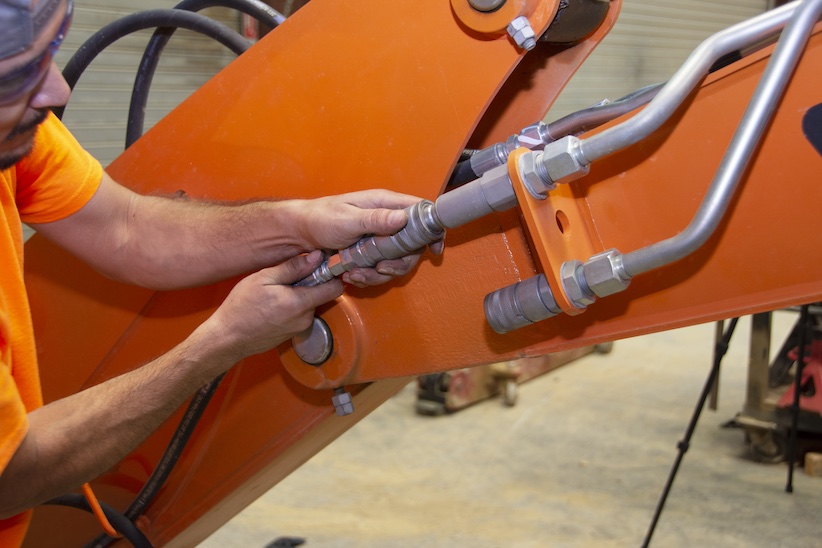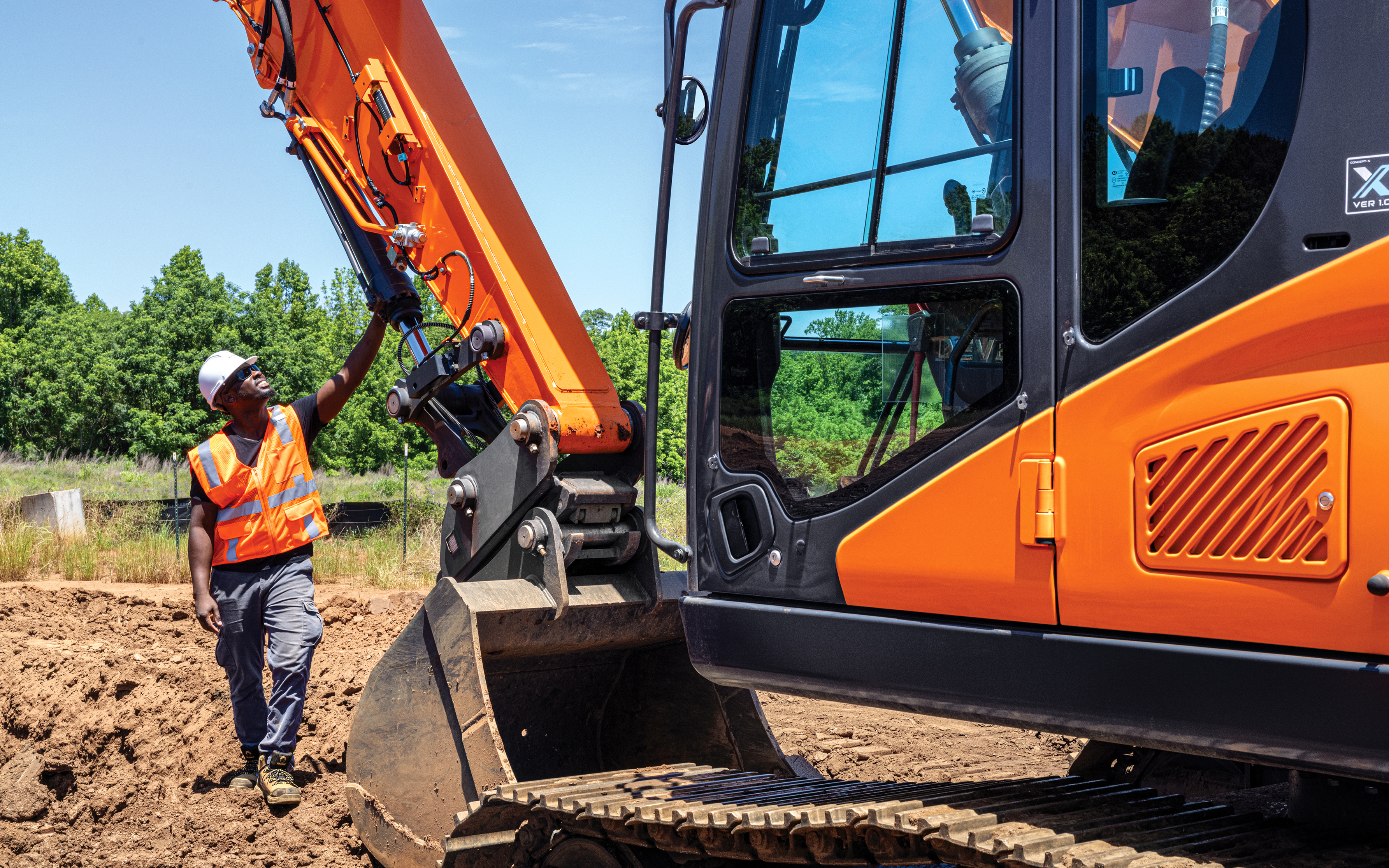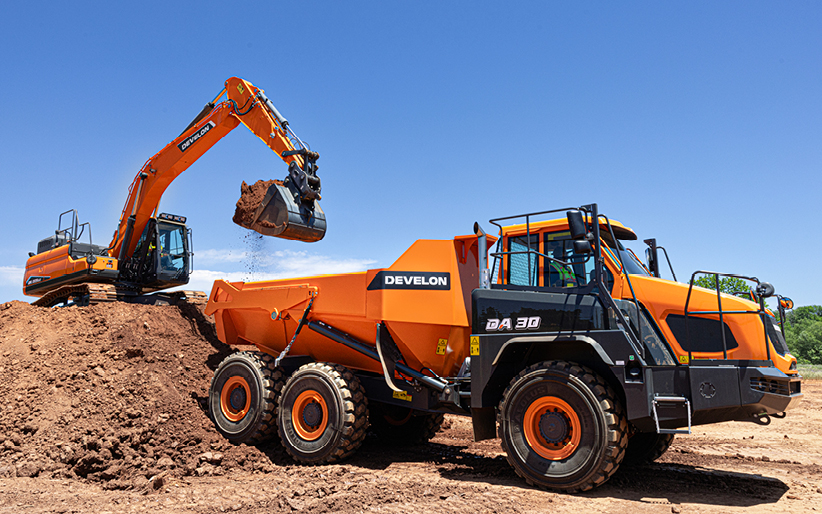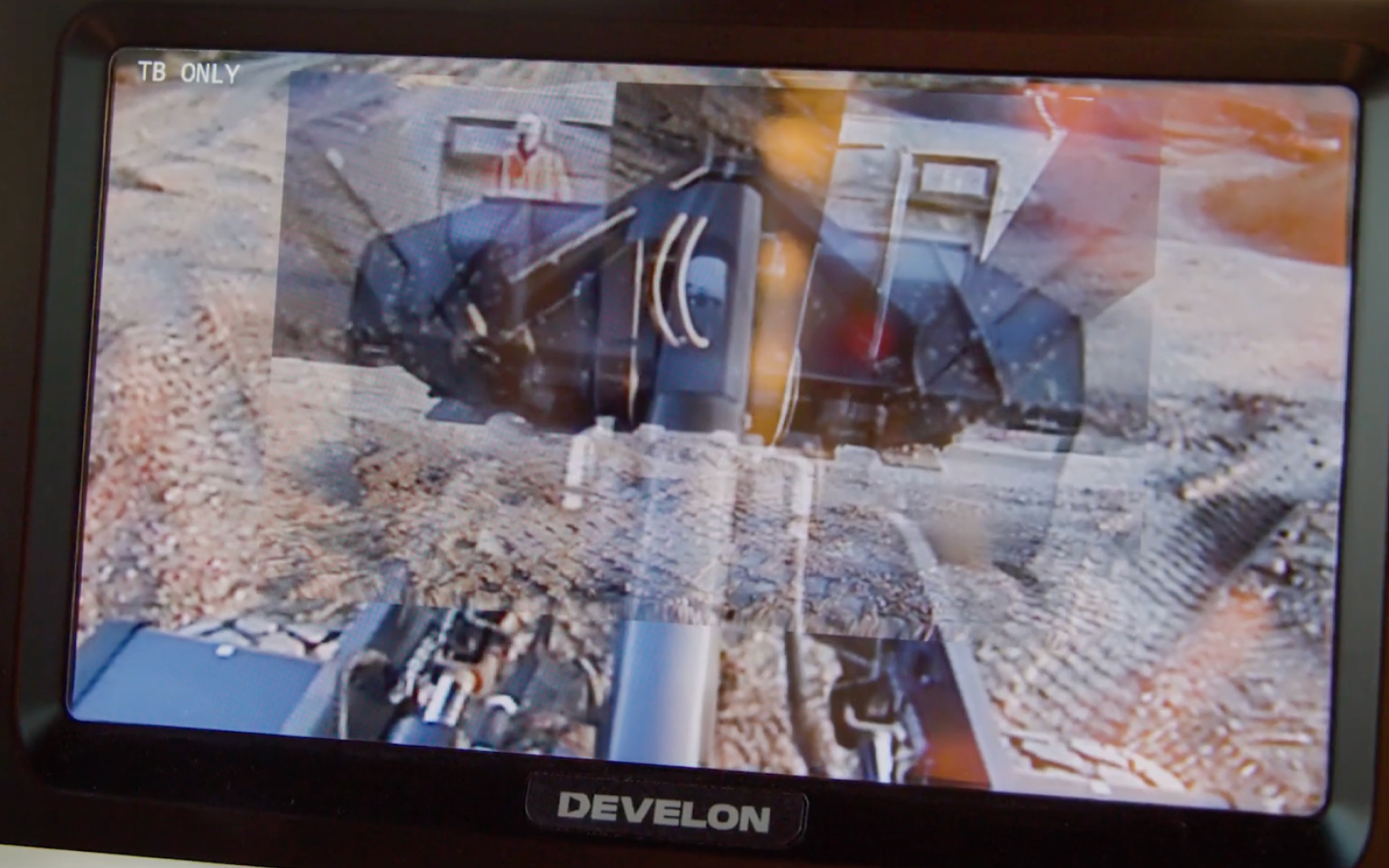When you’re running a critical construction project, every minute counts. You need your equipment to be reliable, versatile and always ready for the next task. This is where compact equipment attachments shine: transforming your machines into multifunctional powerhouses.
This guide to compact equipment attachments will delve into everything from selection and daily maintenance to optimizing performance and ensuring safety, helping you unlock the full compact construction equipment versatility of your fleet.
Why Attachments Matter for Compact Equipment
Imagine you're tackling a project with your mini excavator paired with a hydraulic breaker attachment. Because you make it a habit to follow a quick daily checklist, you spotted a slightly loose hose this morning. A simple tightening with a wrench took only a few minutes, and your attachment was back to work, keeping the project on schedule.
This illustrates a crucial point: By dedicating time in your daily schedule, you can help prevent costly downtime and ensure that project timelines are met. Attachments allow a machine to perform an assortment of jobs, from digging and trenching to breaking and grading. With the right attachments, your compact track loader or mini excavator can become an adaptable tool capable of maximizing productivity and efficiency on virtually any job site.
Choose the Right Attachments for the Job
Before selecting attachments for mini excavator or CTL, take a close look at your typical job sites and the primary tasks you perform.
- Are you working on soft ground, rocky terrain or paved surfaces?
- Will you be digging trenches, breaking concrete, moving earth or clearing brush?
Here are a few common attachment options that can expand your machine's capabilities:
- A dirt bucket is ideal for digging trenches, leveling terrain and shaping surfaces with accuracy.
- For projects requiring precise holes, an auger attachment drills into the ground to create openings for fence posts, footings and plantings with speed and accuracy.
- A rail pallet fork allows a compact track loader to transport and position rails, ballast and ties.
- For even greater precision on sloped or uneven terrain, an angle tilt bucket offers the ability to angle the bucket up to 45 degrees left or right without repositioning the machine.
- A hydraulic quick coupler can help you switch between different mini excavator attachments or CTL attachments in minutes, often without leaving the cab. This reduces downtime between tasks, allowing you to seamlessly transition from digging to breaking to grading.
- For superior material handling and demolition tasks, look into a hydraulic thumb mini excavator attachment. Functioning like a giant mechanical thumb, it works in conjunction with the bucket to grab, hold and sort various materials, from rocks and logs to concrete debris.
- For concrete, rock or other hard materials, a hydraulic breaker delivers powerful, rapid impacts to break down larger debris.
Inspect Attachments
The simplest, yet most often overlooked, maintenance step is a daily inspection. Before each shift, get into the habit of performing a thorough visual check. You'll want to:
- Examine critical areas: Look closely at welds, stress points and areas that experience heavy impact for any signs of cracks or damage.
- Check for wear: Inspect for uneven wear on various components and excessive wear on ground-engaging tools like bucket teeth and cutting edges, as these directly impact efficiency.
- Spot leaks early: Pay special attention to potential sources of leaks, particularly if hydraulic components are involved, such as worn-out hoses or cylinders. Addressing leaks promptly is crucial to prevent fluid loss, environmental contamination and potential damage to the hydraulic system.
- Verify secure connections: Confirm that the coupler is securely locked in place. Also, check all other bolts, nuts, pins and hoses for tightness and ensure that they're all present. Vibrations during operation can loosen these components, leading to malfunctions or even detachment.
- Clean thoroughly: Remove any accumulated dirt, mud or other debris that can hinder movement, trap moisture or cause corrosion. In harsher conditions like rocky or stony ground, hidden damage or corrosion can occur, so thorough cleaning is essential for proper inspection.
Lubricate Parts Before Operating
Many attachments for mini excavators and CTLs rely on moving parts that need regular lubrication. This minimizes friction, reduces wear and prevents premature failure. Before each day of operation, or as recommended in your manufacturer's manual, make sure all grease points are properly lubricated. Key areas to focus on include:
- Pivot points and hinges.
- Cylinder rods and bearings.
- Rotating components on tools like augers and brush cutters.
Avoid both over-greasing and under-greasing. Always follow the manufacturer’s specific service intervals, as these can vary significantly depending on the attachment and your operating environment.
Quickly Address Repair Issues
Attachments will likely need repairs over their lifespan. The key is addressing issues promptly to prevent further damage and keep them functioning longer.
Be on the lookout for early warning signs:
- Visible damage or misalignment.
- New or unusual sounds.
- Irregular movements from hydraulic attachments.
- Visible leaks, whether high-pressure sprays or occasional drips. For example, if your hydraulic thumb mini excavator starts showing signs of fluid leakage, it needs immediate attention.
For minor issues, like tightening a loose bolt or replacing worn teeth, you might be able to handle them yourself after consulting the service manual.
However, more complex problems, such as structural damage or significant hydraulic failures, should always be addressed by qualified technicians. Trying to tackle complex repairs without the right knowledge and equipment can lead to more attachment damage, increase job site hazards and often void the attachment's warranty. Your local dealer has skilled service technicians who can provide expert service and easy access to genuine parts, helping you get the most out of your attachment.
Follow Post-Workday Care Steps
Maintenance doesn't stop when the workday ends. Here are a few crucial steps for maximizing compact equipment attachment longevity after use:
- Clean the attachment thoroughly to remove dirt, debris and corrosive materials like salt.
- Clean hoses and connections for hydraulic attachments on both the attachment and machine sides, and relieve pressure in the lines if you plan on disconnecting them.
- Conduct a quick visual inspection for any damage that may have occurred during operation.
- Consider touch-up painting to prevent rust in scratched areas.
- Keep attachments in a dry, preferably indoor, environment to prevent weather-related wear.
- Store attachments on a level surface or use designated stands for stability.
- Add caps to hydraulic attachments to prevent contamination, especially during long-term storage.
- Follow specific storage recommendations in the manufacturer's manual.
Prioritize Attachment Operating Procedures
Safety should always be your top priority when using compact equipment attachments. This protects you and those around you and prevents damage to both the attachment and your machine. Here are key reminders:
- Secure the coupler: If your machine uses a hydraulic coupler (common for mini excavators and compact track loaders), always double-check that it's properly locked.
- Respect capacity limits: Never use an attachment that exceeds your machine's rated capacity (size and weight), even if it physically fits.
- Be aware of your surroundings: Pay close attention to bystanders and follow all job site safety protocols, especially when operating high-impact tools or compaction equipment in construction.
- Get proper training: Some specialized attachments require specific training for operators to understand their safe operation and limitations.
Always check your machine’s hydraulic settings for the attachment you're using. Many newer machines allow you to select the attachment type, and they’ll adjust these settings automatically. However, using the wrong settings, such as high flow with an attachment not designed for it, can seriously damage the attachment. You'll often find labels on the attachment that clearly state its maximum flow rate and pressure.
Transport Attachments Safely
Transporting compact equipment attachments on a trailer with your machine requires a strong focus on safety. It all begins with a well-balanced and securely loaded trailer. To ensure a safe journey, remember these crucial steps:
- Distribute weight evenly: Make sure the attachment's weight is spread uniformly across the trailer. This is essential for maintaining balance and stability while towing.
- Secure loose components: If your hydraulic attachments have hoses or other parts that could shift during transport, make sure they’re properly secured to prevent damage.
- Use appropriate tie-downs: Always use safety chains and straps that are rated for the specific weight and size of your attachment.
- Connect securely: Make sure these tie-downs are firmly connected to the designated anchor points on the attachment.
- Prioritize balance: While the exact placement of the attachment relative to your machine might vary, achieving even weight distribution is the most critical factor for safe towing.
By following these steps, you can keep your mini excavator and compact track loader attachments running their best for longer, making your work safer, more efficient and ultimately more profitable.

By Jay Patel, Attachments Product Manager
Jay Patel is a product and attachments manager at DEVELON. He is responsible for developing attachments for heavy construction and compact equipment like mini excavators and compact track loaders.

